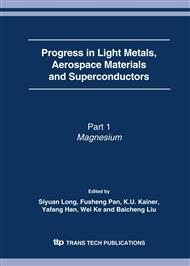p.1571
p.1575
p.1581
p.1585
p.1591
p.1597
p.1603
p.1609
p.1615
A Finite Element Model and Experimental Verification for the Mechanical Properties of 2.5-D Braided Composites
Abstract:
As for 2.5-D layer-to-layer angle interlock braided composites, the cross section of the warp tow was represented in double-convex lens form, and the center line of the warp tow was along the sinusoid. The arranging characteristic of weft tow fibers along the cross section outline of the longitude fibers was studied in detail. A novel finite element model for 2.5-D braided composites was established to predict elastic modulus. The finite element software ANSYS was adopted to study the mechanical properties of the model and presented its stress nephogram, and the influence of the braided structure parameters on the elastic modulus of this material was analyzed in detail. To validate this model, qualified experimental samples were made by VARTM technique, and then tensile tests were performed to determine the mechanical properties. The results show that the conclusions of finite element method (FEM) fit well with the experimental values, and this model can be used to predict effectively the macro modulus of 2.5-D braided composites.
Info:
Periodical:
Pages:
1591-1596
Citation:
Online since:
May 2007
Authors:
Price:
Сopyright:
© 2007 Trans Tech Publications Ltd. All Rights Reserved
Share:
Citation:


